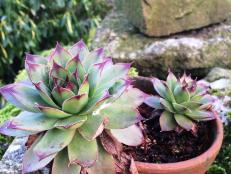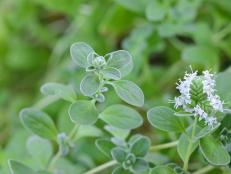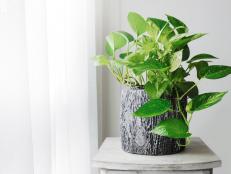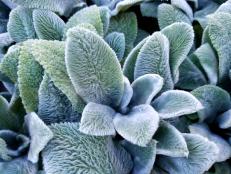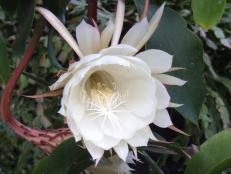Prickly Pear Cactus
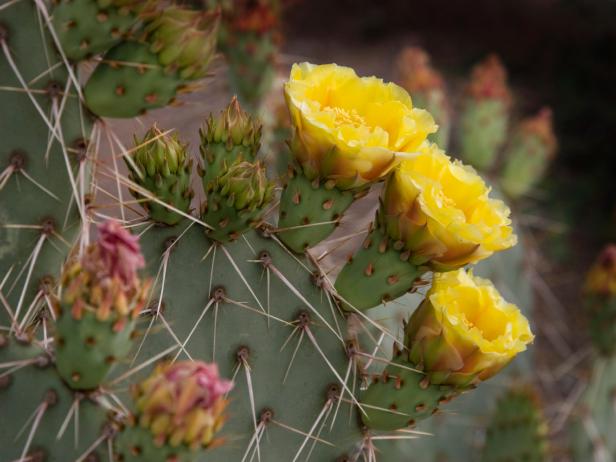
To write a short article about prickly pear cactus is like writing a one-page summary of War an Peace.
In Mexico and points south, this cactus is cultivated to yield food, candy and a natural diabetes medicine. A famous red dye, cochineal (co-chin-ee-ya), is harvested from white scale insects that afflict its skin. With thorns burned off, the plants even become succulent cattle fodder. And nothing creates a more impenetrable security barrier than a prickly pear hedge.
Prickly pear is returning from obscurity to take its rightful place in our gardens. It's not just an attractive ornamental, it yields culinary delights in the kitchen. But before you dive in to cactus cuisine, it helps to know the terminology.
The entire plant is called "nopal" and individual stem segments are "nopales." Tender young stem segments are the edible parts, called "cladodes" or "nopalitos." These are chopped and used to make more than 200 dishes from stews to salad pickles.
In Mexican gardens you'll find the top half of paddles are pruned off at an odd right angle. This encourages development of more numerous cladodes, which are picked at just a few weeks old while still thin and before fibers develop inside.
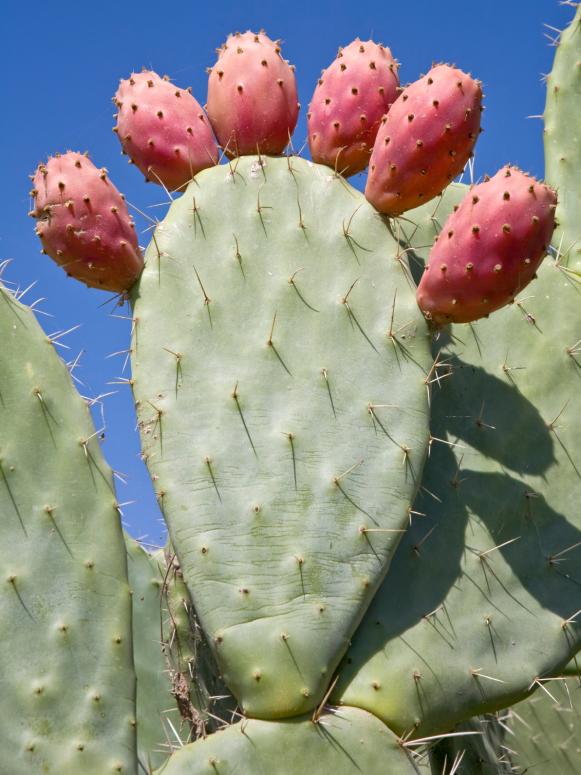
The fruit that follows the extraordinary flowers are called "tunas." These are green, turning soft in orange, pink or red when ripe and sweet. The skin is peeled away to reveal flesh that is 15 percent sugar, with a texture like melon peppered with BB sized seeds. Fresh tunas taste similar to kiwi fruit and can be made into jams and jellies just like tree fruit.
The challenge to cooks and gardeners is working around the thorns. Most species bear long, wickedly sharp thorns protruding in clusters from evenly spaced aeroles. Surrounding the thorns are "glochids," fine hair-like fuzzy spines that cloak the surface of the aerole. These microscopic glochids are brutally painful and almost impossible to remove from the skin.
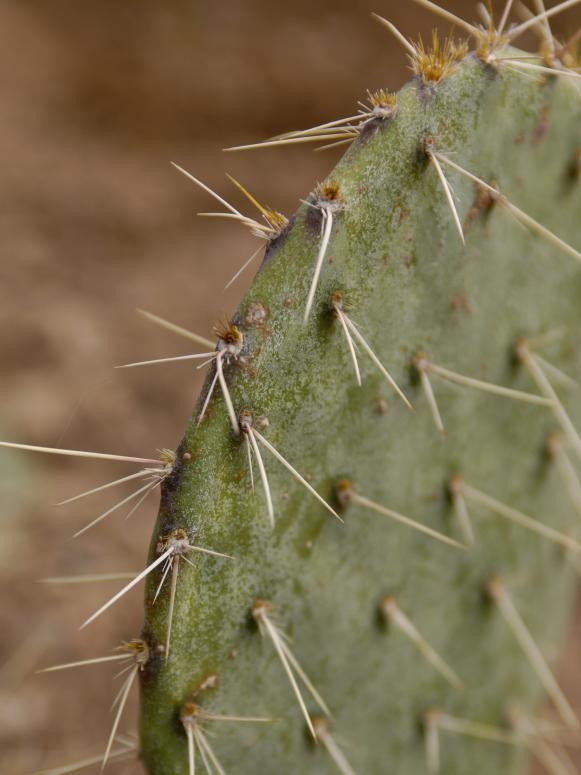
Even though a prickly pear may be visibly spineless, the glochids on paddles and fruits remain just as nasty.
The best way to pick prickly pear is with a strong pair of metal salad/barbecue tongs with the tips wrapped in duct tape. This prevents cutting into the skin, which can introduce glochids to the inner flesh. In the kitchen use a propane torch and a non-taped pair of tongs to hold the piece of cactus, then brush the flame back and forth over the surface. You'll see both spines and glochids quickly burned away.
Prickly pears have for centuries been cultivated in Mexico. Various species were brought into villages and grown next to one another in home gardens. This produced widespread cross-pollination resulting in many hybrids of unknown origin. For this reason they are sold "as is," and to verify flower color, buy only when in bloom.
The most outstanding species or group of prickly pear is Opuntia ficus indica. This is the commercially harvested species that grows upright and arborescent at maturity. It will take some cold but will never achieve its true stature in the north or at high elevations. Frost is not the only enemy. Rainfall and cold weather can foster rot at the heart of the plant. Once this sets in it is nearly impossible to stop except in hot, dry weather.
There are many other cold hardy natives to choose from. Log on to www.desertusa.com and click on the Plants/Wildflowers for a superior list of prickly pears and their regional adaptations. A variety of online cactus nurseries can get you started with plants that match your climate.
For anyone who loves the traditional foods of the Southwest, or those exploring the more unconventional cuisine of Mexico, growing prickly pear is a must. In the process you'll discover that the true beauty of these plants is in their resilient nature so deeply admired it is pictured on the national seal of Mexico.
Maureen Gilmer is a horticulturist and host of "Weekend Gardening" on DIY-Do It Yourself Network. For more information, visit www.moplants.com or www.DIYNetwork.com. Distributed by Scripps Howard News Service.








